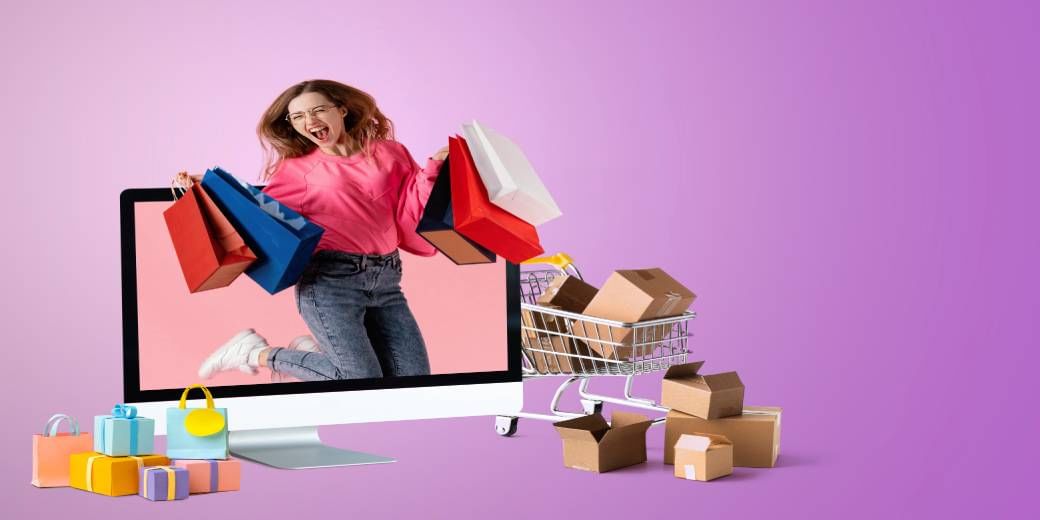Online channels outperform retail stores
Online sales seem to have done far better than retail sales during the April-June quarter of financial year 2023.

While brick-and-mortar stores and major retailers have reported slackening sales in a wide range of products from apparels to shoes and beauty products to FMCG goods, online sales seem to have done far better during the April-June quarter, The Economic Times has reported.
Entities such as ICICI Securities and Unicommerce, a warehouse service provider for ecommerce, have reported buoyant sales in the cyberspace that contradicts sharply with the litany of woes one encounters in the physical retail space.
While retailers were struggling to clear inventory with early end-of-season-sales and flash discounts, a report by ICICI Securities has clearly said that online sales have been especially good in the fashion and food sectors compared to the offline stores. To make its calculations, ICICI Securities obtained data from food delivery app Zomato and fashion and beauty product seller Nykaa.
Underscoring the performance of the online segment, the ICICI report stated, “As noted in Q4FY23 (January-March 2023), we believe (the) consumption slowdown continued in Q1FY24E (April-June 2023) in most business-to-business (B2B) consumption categories. We think this is due to sustained consumer inflation and its impact on disposable income as ‘return to office’ continues to be implemented across the country. However, online commerce seems to be faring better than online.”
ICICI Securities reported that Nykaa is expected to record 11% rise (year-on-year) in its sales of fashion products. This is in contrast to most of the apparel retailers achieve a growth in revenue in the April-June quarter. It also said Zomato outperformed almost all the quick-service restaurants.
Data from Unicommerce provide a more rosy picture for online sales. It indicates that there has been a sharp 24% growth in revenue from the sales of fashion items and accessories, health products, pharmaceuticals and eyewear. While health and pharma grew by a whopping 47%, eyewear sales jumped by 30% and revenues from fashion and accessories improved by 24% in the April-June quarter.
The sales of smartphones displayed a clear higher demand for the more expensive handsets. While phones that cost less than Rs 12,000 sold 20% fewer, the premium handsets sold 50% more. The demand, it is said, is being substantially fuelled by the easy availability of loans.
“Rural consumer spending, I am including the urban poor in this category, has been extremely sluggish over the past six months. This has had a direct impact on both online and offline retail,” said Ashish Dhir, executive vice-president (consumer and retail) at market research firm 1Lattice.
Vice-president, research at Counterpoint, an entity that tracks handset sales, told the newspaper that sales of phones are expected to rise in the second half of the year when festive discounts would be on offer. Right now, he felt, inflationary pressures are prompting people to hold back purchases.
This trend is also being felt by some in the fashion space. “In fashion, products priced below Rs 500 are selling less but on the other hand brands priced higher have done well,” said a senior executive in the ecommerce domain.aa
Download Money9 App for the latest updates on Personal Finance.
Related
- खुला है निप्पॉन इंडिया का रियल्टी और ऑटो सेक्टर का NFO, 28 नवंबर को होगा बंद
- अब कोचिंग सेंटर नहीं दे पाएंगे भ्रामक विज्ञापन, सरकार ने जारी की नई गाइडलाइन्स
- BOB Card से खरीदारी पर यहां मिल रहा बंपर डिस्काउंट, फ्रिज, टीवी, एसी पर 45,000 रुपये तक बचत
- EPF, ESIC और EPS में बड़े बदलाव की तैयारी में सरकार, बढ़ा सकती है बेसिक सैलरी लिमिट
- वेस्टर्न कैरियर्स के IPO में लगाने जा रहे हैं पैसे? यहां जान लें पूरी डिटेल
- Mercedes-Benz जल्द लॉन्च करेगी नई E-Class कार, सेल्फी कैमरा के साथ मिल रहे हैं कई दमदार फीचर्स

